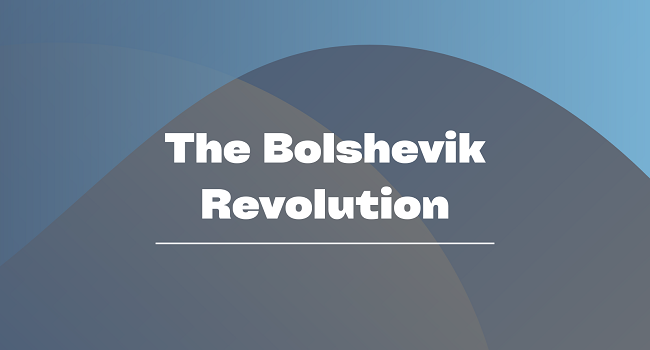The Bolshevik Revolution:
The Bolsheviks began to preach and spread their ideas through the newspaper “Pravada”. The voice of the Bolsheviks rang throughout the whole of Russia: stop the war, give fields to the peasants, and bread to the poor. The Bolsheviks were planning to capture power through an armed revolution. To execute this plan they appointed a Polit Bureau. Trotsky appointed a Militray Revolutionary Committee of the Petrograd Soviet. The Kerensky government was not in a good condition because the Revolutionary Socialist and Menshevik Parties had quit his cabinet. The Bolshevik leaders decided to execute the plan of revolution before November 7 when the All Russian Congress of Soviets was scheduled to meet. Therefore, on November 5, 1917, Kerensky ordered the arrest of Bolshevik leaders. But by this time the Bolsheviks had made all preparations for the revolution. Kerensky’s order gave them an additional excuse to excite public opinion against the government. On the night of 6-7 November, the Bolsheviks captured telephone booths, post offices, railway stations, and banks. On the morning of November 7, 1917 workers, soldiers, and sailors under the leadership of Bolsheviks attacked the former Winter Palace of the Czar in Petrograd and arrested the members of the temporary government who had taken shelter there. Kerensky fled from the capital. All the ministers of the temporary government were arrested. Posters were pasted at prominent places in the capital, which declared that the temporary government had been abolished and power had been taken over by the revolutionary committee of the Proletariat and the Petrograd Garrison. Thus in a few hours and without any bloodshed the Russian capital passed into the hands of the Bolshevik Party. The Kerensky government had fallen not because its enemies were powerful but because it was in a helpless condition. Three hours after this incident, the second all-Russian Congress of Soviets comprising the delegates of workers and soldiers declared Russia a Soviet Socialist Republic. The government authority had now passed into the hands of the people and the proletariat which was the most exploited but most revolutionary and organized class assumed power.
Thus the socialist revolution that succeeded in Russia had to fulfil a great historical mission i.e. to construct a new society free from any exploiter and the exploited, a suppressed and the suppressed. This society was to be known as the “communist society”.
November 7, 1917, is a red letter day not only in the history of the Russian people but also of the whole of humanity. On this day the people’s revolution succeeded in Petrograd without shedding a drop of blood. The second All Russian Congress of Soviets the members of which had been elected by 20 million people in a democratic way held its session and a soviet cabinet was elected under the leadership of Vladimir Ilyich Lenin. Two important resolutions were moved in the All-Russian Congress.
(1) In the first an appeal was made to all the belligerent nations to stop war and to begin peace talks.
(2) In the second it was decided to seize all the land belonging to landowners without paying them any compensation.
A council of People’s Commissars was set up under Lenin with Stalin, Trotsky, Raikav, and Milyutin as its members. Lenin issued many commands and declared the programme of the newly constituted government.









Comments (No)